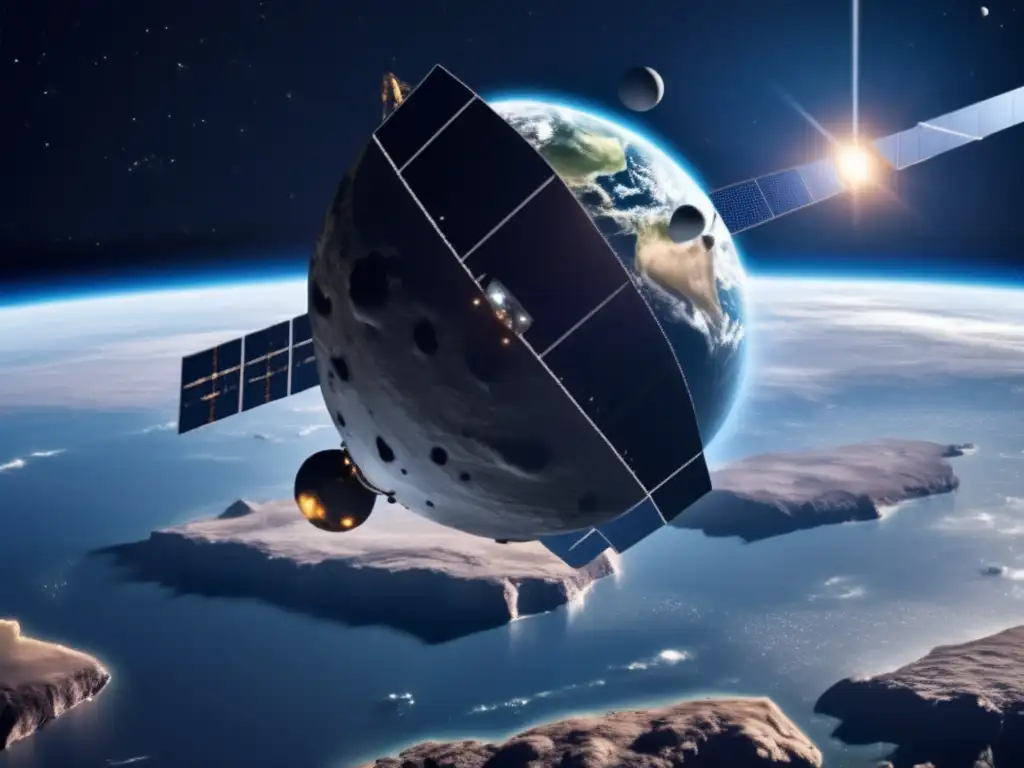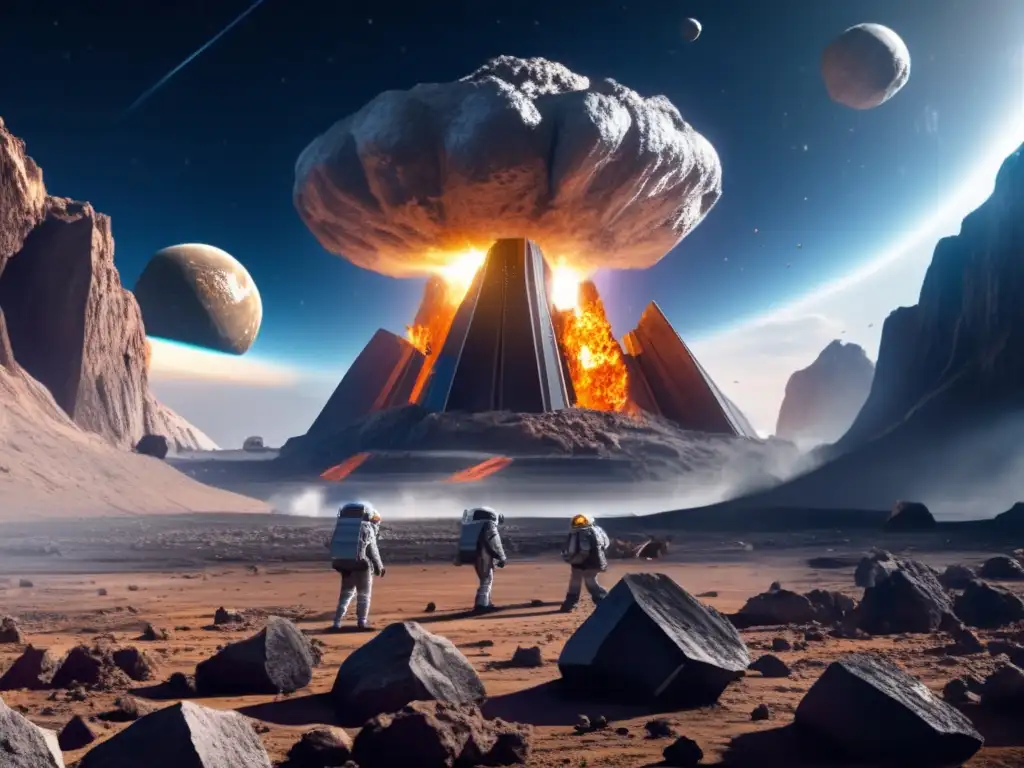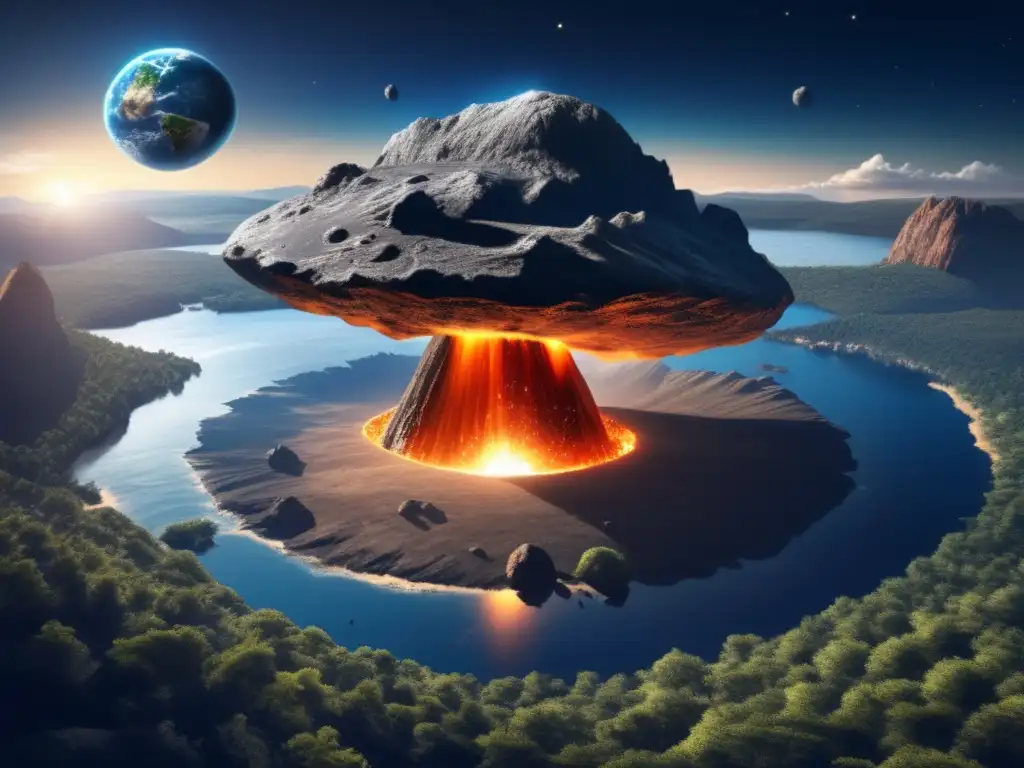Protecting Our Planet: The Latest In Asteroid Defense

Introduction
Since the dawn of time, asteroids have been a source of fear and fascination for humanity. But as we learn more about these celestial bodies, we have come to realize that they pose a very real threat to our planet. A single impact could be catastrophic, potentially wiping out entire cities or even causing a global extinction event.
Thankfully, scientists and researchers around the world are working tirelessly to develop new methods of asteroid defense, from early warning systems to techniques for deflecting or destroying dangerous objects before they can reach Earth. In this article, we'll explore some of the latest innovations in asteroid defense technology and how they are helping us protect our planet.
Early Warning Systems

NASA's Planetary Defense Coordination Office
NASA's Planetary Defense Coordination Office (PDCO) is responsible for detecting, tracking, and characterizing potentially hazardous asteroids (PHAs) that could pose a threat to Earth. The PDCO uses a variety of telescopes and other instruments to monitor the skies and locate PHAs, providing advance warning of any potential impacts.
Automatic Detection System
The Automatic Detection System (ADS) is a new tool developed by the European Space Agency (ESA) to help detect and track near-Earth objects (NEOs). The ADS uses artificial intelligence to scan telescope images for signs of moving objects that could be PHAs or other NEOs, making it easier and faster to identify potentially dangerous asteroids.
Asteroid Terrestrial-impact Last Alert System
The Asteroid Terrestrial-impact Last Alert System (ATLAS) is a network of telescopes developed by the University of Hawaii to detect and track asteroids that could pose a threat to Earth. The ATLAS telescopes scan the sky for any new objects, allowing researchers to quickly identify and characterize any potentially dangerous asteroids.
Asteroid Deflection and Destruction

Gravity Tractor
The Gravity Tractor is a proposed method for deflecting asteroids using the gravitational pull of a spacecraft. The spacecraft would rendezvous with the asteroid and use its own gravity to slowly pull the object off course, altering its trajectory and preventing it from colliding with Earth.
Kinetic Impact
Kinetic impact involves colliding a spacecraft with an asteroid at high speed, causing a small but significant change in the object's trajectory. This technique could be used to deflect an asteroid away from Earth or even to destroy it entirely if necessary.
Laser Ablation
Laser ablation involves using a powerful laser to heat up and vaporize the surface of an asteroid, creating a jet of gas that provides thrust and changes the object's trajectory. This technique could be especially useful for smaller asteroids that are difficult to deflect using other methods.
International Collaboration and Cooperation

The International Asteroid Warning Network
The International Asteroid Warning Network (IAWN) is a global coalition of space agencies and scientific institutions dedicated to detecting and tracking potentially hazardous asteroids. The IAWN works to share data and resources, coordinate observation campaigns, and develop new technologies and techniques for asteroid defense.
The United Nations Office for Outer Space Affairs
The United Nations Office for Outer Space Affairs (UNOOSA) is responsible for coordinating international efforts to protect Earth from potential asteroid impacts. UNOOSA works to promote collaboration and cooperation among member states, as well as to develop guidelines and best practices for asteroid defense.
The Asteroid Impact and Deflection Assessment
The Asteroid Impact and Deflection Assessment (AIDA) is a joint mission between NASA and the ESA that aims to test the effectiveness of asteroid deflection techniques. The mission will involve launching two spacecraft towards the asteroid Didymos, with one spacecraft colliding with the object while the other observes the impact and measures its effects. The data collected from this mission will help researchers refine and improve their asteroid defense strategies.
Frequently Asked Questions

-
How likely is it that an asteroid will hit Earth?
While the odds of a catastrophic asteroid impact are relatively low, experts estimate that there are thousands of PHAs in our solar system and that it's only a matter of time before one poses a serious threat to Earth. That's why it's important to continue investing in asteroid defense technologies and early warning systems.
-
What would happen if an asteroid hit Earth?
The effects of an asteroid impact would depend on the size and speed of the object, as well as where it landed. A large impact could cause widespread destruction and potentially trigger a global extinction event.
-
Can we destroy an asteroid before it hits Earth?
It is possible to deflect or destroy asteroids using a variety of methods, including kinetic impact, laser ablation, and gravity tractors. However, these techniques are still in development and require significant investment in research and development.
-
How long would we have to prepare for an asteroid impact?
It depends on the size of the asteroid and how far away it is from Earth. Early warning systems like those used by NASA and the ESA can provide anywhere from a few days to several years of advance notice.
-
What can I do to help protect our planet from asteroid impacts?
While there's not much that individuals can do to directly impact asteroid defense efforts, there are still ways to get involved and raise awareness about this important issue. Consider supporting organizations like the B612 Foundation or the Planetary Society, which work to promote asteroid defense and space exploration.
Conclusion
While the threat of asteroid impacts may seem like a plot straight out of a Hollywood disaster movie, it is a very real and pressing concern that demands our attention and resources. By investing in early warning systems, asteroid deflection technologies, and international collaboration and cooperation, we can work together to protect our planet and ensure a safe and secure future for generations to come.
Don't forget to share your thoughts and feedback in the comments section below! And be sure to check out the additional resources section for more information on asteroid defense and related topics.
Additional Resources

Here are some links and references for those interested in delving deeper into the topic of asteroid defense:
- NASA Planetary Defense Coordination Office
- ESA Automatic Detection System
- University of Hawaii Asteroid Terrestrial-impact Last Alert System
- UNOOSA Asteroid Defense Page
- B612 Foundation
- The Planetary Society
 Standing Up To Space Rocks: Strategies For Asteroid Defense
Standing Up To Space Rocks: Strategies For Asteroid Defense Our Planetary Guardians: Techniques In Asteroid Defense
Our Planetary Guardians: Techniques In Asteroid Defense Space Rock Showdown: Tools For Asteroid Defense
Space Rock Showdown: Tools For Asteroid DefenseIf you want to discover more articles similar to Protecting Our Planet: The Latest In Asteroid Defense, you can visit the Planetary Defense category.
Leave a Reply

Articulos relacionados: